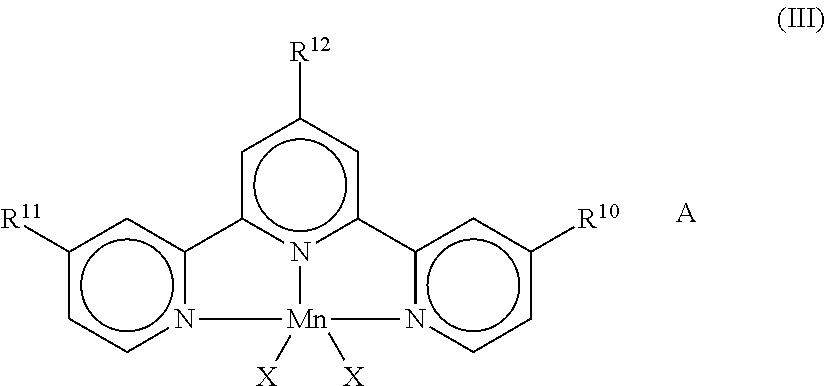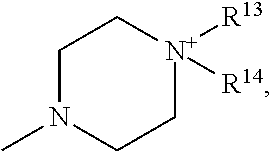Gentle bleaching agent
a bleaching agent and gentle technology, applied in the field of gentle bleaching agents, can solve the problems of difficult use of transition metal catalysts in washing agents, the risk of oxidative damage to textiles, etc., and achieve the effect of significantly influencing the bleaching performance and reducing the damage to material containing cellulos
- Summary
- Abstract
- Description
- Claims
- Application Information
AI Technical Summary
Benefits of technology
Problems solved by technology
Method used
Image
Examples
examples
[0063]Primary detergency and loss of wet tensile strength were tested in a miniaturized washing test. The test was conducted using a simplified washing solution consisting of H2O2 and catalyst (1,4,7-trimethyl-1,4,7-triazacyclononane-manganese complex, Mn-Me3TACN). Solutions of 0.35 g / L H2O2 and 5 μmol / L Mn-Me3TACN and 0 g / L (V1) o 0.11 g / L (M1) Na alginate and / or 0.11 g / L (M2) pectin in water (3° dH) were used, the pH of the solution having been adjusted by NaOH to pH 10.5.
[0064]For measurement of the primary detergency, cotton substrates which had been provided with a standardized tea soil were treated for 30 minutes at 30° C. in the respective solutions. The treated fabric substrate was washed out under running water and then dried and the color was measured. The following table shows the brightness value of the cotton test pieces.
[0065]For measurement of the loss of wet tensile strength, cotton strips of a defined width (number of threads) were treated 20 times over 45 minutes e...
PUM
| Property | Measurement | Unit |
|---|---|---|
| temperatures | aaaaa | aaaaa |
| pH | aaaaa | aaaaa |
| pH | aaaaa | aaaaa |
Abstract
Description
Claims
Application Information
 Login to View More
Login to View More - R&D
- Intellectual Property
- Life Sciences
- Materials
- Tech Scout
- Unparalleled Data Quality
- Higher Quality Content
- 60% Fewer Hallucinations
Browse by: Latest US Patents, China's latest patents, Technical Efficacy Thesaurus, Application Domain, Technology Topic, Popular Technical Reports.
© 2025 PatSnap. All rights reserved.Legal|Privacy policy|Modern Slavery Act Transparency Statement|Sitemap|About US| Contact US: help@patsnap.com



